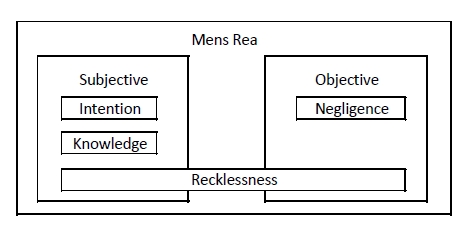Understanding General and Specific Intent Crimes
Contents
- Understanding General and Specific Intent Crimes
- Difference Between Specific and General Intent Crimes
- Specific Intent Crimes
- Examples of Specific Intent Crimes
- General Intent Crimes
- Significance of Intent in criminal law
- Challenges in Proving Intent in Court
- FAQs on Criminal Intent
- What is the Meaning of General Intent?
- What is a Specific Intent?
- What is the General Intent Rule?
- What is an Example of General Intent?
- Is General Intent Reckless?
- What are the Three Types of Specific Intent?
- Are there 3 Types of Intent?
- How do You Prove Specific Intent?
- Is Robbery Specific or General Intent?
- What is the Most Common Definition of Specific Intent?
- What is the Difference between General Intent and Strict Liability?
- Is Kidnapping a Specific Intent Crime?
- What is Implied Intent?
- What are the 4 Levels of Intent?
- Conclusion
Legal language can be complex and difficult to understand. This is particularly true when it comes to criminal law. One of the most significant distinctions in criminal law is between specific intent crimes and general intent crimes. Understanding the differences between the two can help you better understand the charges you may be facing or help you if you ever have to represent yourself in court.
In this post, we will decode the legal jargon and explain the difference between specific and general intent crimes. We’ll also provide some examples of each to help you better understand how they differ from one another.
Difference Between Specific and General Intent Crimes
The basic difference between specific intent crimes and general intent crimes is that specific intent requires that the defendant intended both the action and the result of the action. A general intent crime means that the defendant only intended the action.

Statutes are not always clear regarding which type of crime is considered specific intent vs. general intent. Instead, courts look to whether the defendant purposefully, knowingly, and voluntarily committed a crime with the intent of harm, or whether the defendant merely purposefully, knowingly, and voluntarily committed a crime.
Crimes That May Be Termed Specific Intent
In simple terms, specific intent crimes require the offender to have a conscious desire or purpose to commit a particular act. The mental state of the perpetrator plays a significant role in determining guilt. Some crimes require that the defendant knowingly and voluntarily committed the crime with specific intent. These crimes may include:
- Murder
- Conspiracy
- Attempted crimes, such as attempted murder
- False imprisonment
- Larceny
Crimes That May Be Termed General Intent
On the other hand, general intent crimes do not require a specific purpose or objective behind the action. Instead, they focus on the awareness of the consequences that the act may cause. In general intent crimes, the offender is held accountable for engaging in behavior that society deems inappropriate or dangerous. General intent crimes are usually based on whether the court finds that the defendant has acted negligently or recklessly. These crimes may include:
- Negligent homicide
- Manslaughter
- Battery
- Arson
- Rape
Differentiating between specific and general intent crimes is essential because it affects the burden of proof and the potential defenses available to the accused. In specific intent crimes, the prosecution must prove beyond a reasonable doubt that the defendant had the intent to commit the specific act. This can sometimes be challenging to establish, as it requires demonstrating the defendant’s state of mind.
In contrast, general intent crimes often rely on proof of the defendant’s actions and their awareness of the potential consequences. The prosecution may have an easier burden of proof in these cases, as they can focus more on the objective evidence rather than the defendant’s subjective intent.
Specific Intent Crimes
Specific intent crimes are those in which the prosecution must prove that the defendant had a particular intent or purpose in committing the act. In other words, the accused must have intentionally performed the act with a specific goal in mind. This can include crimes like burglary, forgery, or premeditated murder.
To establish the elements of a specific intent crime, the prosecution must demonstrate various factors. These factors typically involve proving that the accused not only committed the act but also possessed a mental state beyond mere recklessness or negligence. For example, in a charge of burglary, the prosecution would need to show that the defendant entered a structure unlawfully and with the specific intent to commit a crime therein.
Understanding the specific intent element is crucial because it can affect the defendant’s mental state and potential defenses. For instance, a defendant may argue that they lacked the specific intent required for the crime, presenting evidence that their actions were accidental or lacked a deliberate purpose.
Specific intent crimes often carry more severe penalties than general intent crimes due to their intentional nature. The burden of proof for the prosecution is also higher in specific intent cases, as they must establish not only the act but also the specific mental state of the accused.
Examples of Specific Intent Crimes
Specific intent crimes refer to offenses that require a specific mental state or intent to be proven by the prosecution. These crimes often involve a higher level of culpability, as they require the perpetrator to have a particular purpose or motive when committing the act.
Burglary
To be convicted of burglary, the prosecution must prove that the defendant not only unlawfully entered a building or structure but also had the specific intent to commit a crime inside, such as theft or assault. The emphasis here is on the perpetrator’s intention to engage in criminal activity once inside the premises.
Forgery
Forging a document, such as a check or a signature, requires the specific intent to deceive or defraud another person. In this case, the mental state of the perpetrator is crucial in determining their guilt, as they must have knowingly and intentionally created or altered the document with the purpose of misleading others.
Embezzlement
This offense involves the misappropriation or theft of funds entrusted to someone in a position of trust, such as an employee handling company finances. To be convicted of embezzlement, the prosecution must demonstrate that the accused not only took the money but also had the specific intent to permanently deprive the rightful owner of those funds.
General Intent Crimes
These types of offenses are characterized by their focus on the mental state of the perpetrator rather than the specific outcome or result of their actions.
General intent crimes, in essence, require the person to have intended to commit the act in question without any further specific intent. This means that the individual must have had knowledge of their actions and intended to engage in them, regardless of whether they intended the specific consequences that may have resulted.
Assault
In an assault case, the intention to cause harm or provoke fear in another person is enough to establish guilt, regardless of whether the perpetrator intended to cause serious bodily harm or not. The focus is on the intentional act of physically threatening or striking another individual.
Battery
Battery is another example of a general intent crime. It involves intentionally causing harmful or offensive contact with another person. Similar to assault, it does not require the defendant to have a specific intent to cause harm, but rather the general intent to make physical contact.
Theft
Theft is a general intent crime that involves intentionally taking someone else’s property without their consent. It does not require the defendant to have the specific intent to permanently deprive the owner of the property, but rather the general intent to take it without permission.
Trespassing
Trespassing is a general intent crime that involves entering or remaining on someone else’s property without permission. It does not require the defendant to have the specific intent to commit any other offense while trespassing, but rather the general intent to be present on the property without authorization.
Significance of Intent in criminal law
Intent plays a critical role in the field of criminal law, distinguishing between specific intent crimes and general intent crimes. Understanding the significance of intent is essential to comprehend the nuances of criminal offenses and their respective legal consequences.
In criminal law, intent refers to the mental state or purpose behind committing a particular act. It serves as a crucial element in determining the level of culpability and the severity of punishment. By examining the intent of the perpetrator, courts can assess their level of moral blameworthiness and assign appropriate legal consequences.
Specific intent crimes are offenses where the law requires the perpetrator to have a specific mental state or purpose beyond the mere act itself. These crimes involve a deliberate intention to achieve a particular result or outcome. Examples of specific intent crimes are premeditated murder, burglary, or conspiracy. In these cases, the prosecution must prove that the defendant had the conscious desire or knowledge of the consequences of their actions.
On the other hand, general intent crimes are offenses where the law only requires the perpetrator to have a general mental state or awareness. These crimes do not require proof of a specific purpose or motive. Examples of general intent crimes include assault, battery, or driving under the influence (DUI). The focus in these cases is on the act itself rather than the specific intention behind it.
Challenges in Proving Intent in Court
Proving intent in court can be a challenging task for prosecutors and defense attorneys alike. When it comes to specific and general intent crimes, the burden of proof becomes even more complex.
Specific intent crimes require the prosecution to demonstrate that the defendant had a conscious desire or purpose to commit the prohibited act. This means proving that the accused not only committed the act but also had a specific mental state or motive behind it. In contrast, general intent crimes only require the prosecution to establish that the defendant intentionally engaged in the prohibited conduct, without the need to prove a specific purpose or motive.
Challenges arise because intent is a subjective element that resides in the mind of the accused. Unlike physical evidence or eyewitness testimony, intent cannot be directly observed or measured. It often relies on circumstantial evidence, such as the defendant’s actions, statements, or prior behavior, which may be open to interpretation.
Furthermore, intent can be influenced by various factors, including mental health conditions, intoxication, or external pressures. These factors can complicate the process of establishing a person’s state of mind at the time of the alleged offense. Criminal defense lawyers may argue that their client lacked the required intent, presenting evidence to support a different interpretation of the defendant’s actions or state of mind.
To overcome these challenges, both sides may rely on expert witnesses, forensic analysis, or psychological evaluations to shed light on the defendant’s intent. The jury plays a crucial role in weighing the evidence presented and making a determination regarding the defendant’s mental state.
FAQs on Criminal Intent
What is the Meaning of General Intent?
General intent is a legal concept that describes when someone has intentionally performed an act or caused a result. This type of intent doesn’t require any specific mental state or motive, and it can be proven through circumstantial evidence.
What is a Specific Intent?
Specific intent is an enhanced form of intent that requires more than just a general intent to commit a crime. It implies that the offender had a particular purpose or goal in mind when they committed the crime. To prove that specific intent was present, prosecutors must provide direct evidence that demonstrates the perpetrator’s specific purpose.
What is the General Intent Rule?
The general intent rule holds that if a criminal statute doesn’t specify an intent requirement, then general intent will suffice to convict someone for a crime. This means that if a statute contains no words regarding mental state or motive, then simple proof of voluntary action is all that is needed to find someone guilty.
What is an Example of General Intent?
An example of general intent would be someone who drives while drunk. Even though the driver might not have intended to become intoxicated in order to facilitate their own crime, the law still recognizes this as an intentional act with potentially serious consequences.
Is General Intent Reckless?
No, general intent does not involve any recklessness or negligence on the part of the perpetrator. To be considered general intent, an act must be done willfully and purposefully with the knowledge that it may lead to a certain outcome.
What are the Three Types of Specific Intent?
The three types of specific intent are:
- premeditation
- deliberation
- malice aforethought
These types of intent imply that the offender had planned out their actions in advance and specifically targeted someone or something in order to cause harm or commit a crime.
Are there 3 Types of Intent?
Yes, there are three main types of intent:
- general intent
- specific intent
- implied intent
Each type requires proof of different mental states in order to establish guilt.
How do You Prove Specific Intent?
To prove specific intent, prosecutors must show that the defendant had knowledge that their actions would result in a particular outcome and acted with purposeful motivation to achieve this outcome. Evidence such as witness testimony or prior events can be used to prove this mental state.
Is Robbery Specific or General Intent?
Robbery is a specific intent crime, as it involves taking property from another person with the intention of permanently depriving them of it. The perpetrator must have knowledge that their actions will result in this outcome and act willfully to achieve it.
What is the Most Common Definition of Specific Intent?
The most common definition of specific intent is acting with the knowledge that a particular consequence will occur and purposely striving to reach that outcome. Prosecutors must prove this mental state beyond a reasonable doubt in order for a suspect to be found guilty on specific intent charges.
What is the Difference between General Intent and Strict Liability?
The difference between general intent and strict liability is that, while general intent involves knowledge that an illegal act has been committed, strict liability does not require any proof of knowledge or recklessness on behalf of the perpetrator. Strict liability applies in cases where safety regulations must be followed, regardless of whether or not the defendant was aware of them.
Is Kidnapping a Specific Intent Crime?
Yes, kidnapping is a specific intent crime, as it requires the perpetrator to have knowledge of their actions leading to a particular outcome and to willfully pursue this outcome. Evidence such as witness statements can be used to establish this mental state.
What is Implied Intent?
Implied intent refers to a situation where the defendant does not expressly intend to commit an illegal act but is still held liable for it due to their lack of action. This can include situations where one fails to comply with safety regulations or where they engage in activity that puts others at risk.
What are the 4 Levels of Intent?
The four levels of intent are:
- intentional
- reckless
- negligent
- strict liability
Each level has different requirements for proving criminal responsibility, with intentional being the highest level of culpability and strict liability having no need for proof of knowledge or recklessness on behalf of the perpetrator.
Conclusion
We hope this blog post has shed some light on the often confusing terms of specific and general intent crimes. Understanding the difference between these two types of crimes is essential for anyone involved in the legal field, whether as a lawyer, judge, or even a regular citizen. By decoding the legal jargon and grasping the nuances of specific and general intent crimes, you can navigate the legal system more effectively and advocate for justice. Remember, knowledge is power, and the more informed you are, the better equipped you will be to protect your rights and advocate for a fair and just society.




